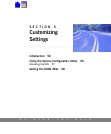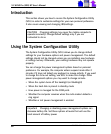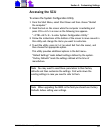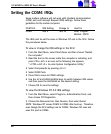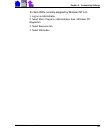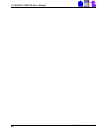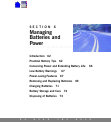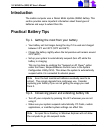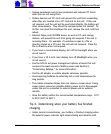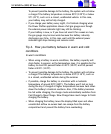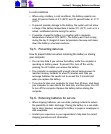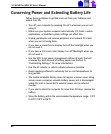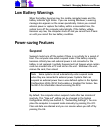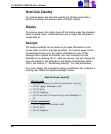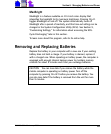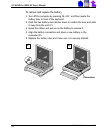
63
Section 6. Managing Batteries and Power
79-0030-001 11 January 2001
• Unplug peripherals and remove peripheral and network PC Cards
when you are not using them.
• Certain devices and PC cards will prevent the unit from suspending
when they are inserted into a PC card slot on the unit. If they are
not required, and the unit will be used intermittently, the battery will
drain unnecessarily. They should be removed when not needed. To
do this, one must first shutdown the unit, remove the card, and then
reboot.
• External floppy and CD-ROM drives, as well as PC card storage
devices, will prevent the unit from going into suspend if the unit is
accessing them. For example, if a window is open to a file or
directory stored on a PC card, the unit will not suspend. Close the
file or directory when not required.
• If you have a monochrome display, turn off the backlight when you
do not need it.
• If you have a 10.4-inch color display, turn off MaxBright when you
do not need it.
• Use the SCU to set power management options at levels that will
consume the least amount of battery power (see Section 5,
Customizing Settings, for more information).
• Use the AC adapter or vehicle adapter whenever possible.
• Avoid exposing batteries to extremely hot or cold temperatures for
long periods.
• The mobile computer display does not require a screen saver. Using
screen savers consumes valuable battery power and is discouraged
unless the unit is connected to external power and an external
monitor.
• Store the battery within the recommended temperature range: 10°C
to 30°C (50°F to 86°F).
Tip 3. Determining when your battery has finished
charging
• Under normal circumstances, your battery is finished charging when
the external power indicator light stops blinking and remains solid.



